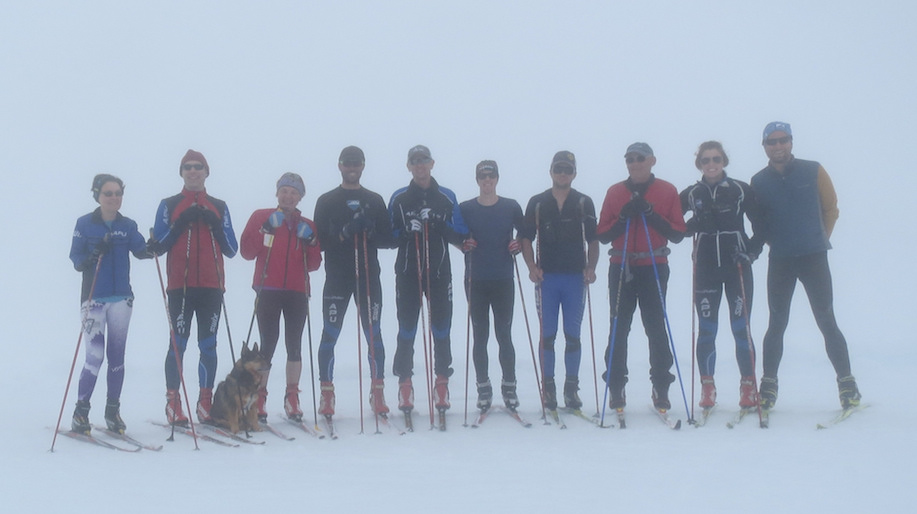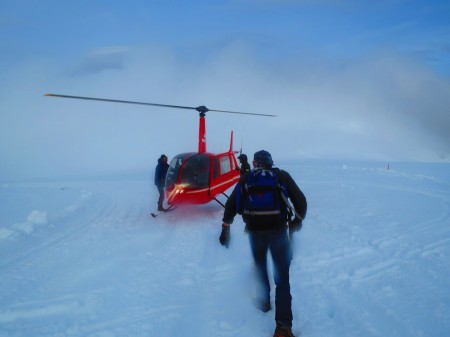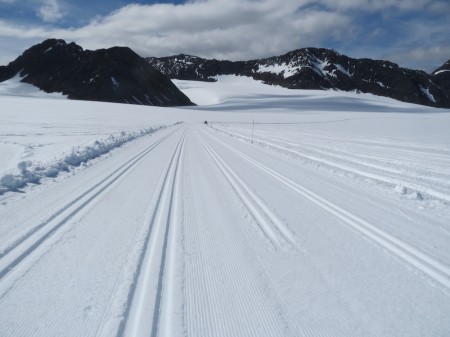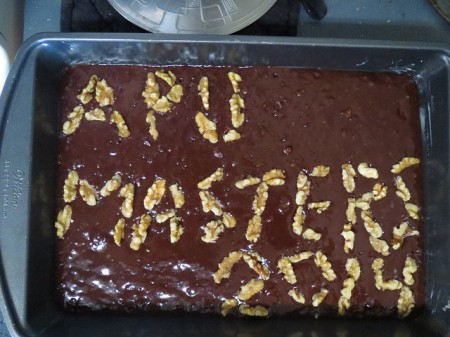
Caption: 2014 APUNSC Masters Camp (L to R): Kathy Christy, Dan Libbey, Berit Flora, Coach Erik Flora, Sam Flora, Gavin Kentch, Coach Don Haering, Gil Lund, Coach Greta Anderson, Shannon Gramse. (All photographs: Shannon Gramse/Flickr)
Masters from about the globe, we want to hear from you! FasterSkier is seeking dedicated masters contributors from numerous clubs and areas, including any and all skiers who aren’t fairly pro or collegiate skiers anymore (or ever — as we know how many catch the bug later in existence!) Whatever your degree of skiing, if you can write, please do!
Submit camp or education recaps or announcements to [email protected] with the topic line “Masters Minds”. Articles can be informal, initial-particular person accounts or written from an observatory standpoint with ideas from other people, like beneath.
***
The gods of American skiing have gathered on Eagle Glacier more than the previous number of weeks, but July started off with a quite different group of skiers at this globe-class instruction facility five,000 feet over Girdwood, Alaska.
From June 28 to July one, Alaska Pacific University Nordic Ski Center (APUNSC) held its third-annual Masters Glacier Camp, hosting 9 skiers ranging in age from their 30s to their early 70s. Skiers loved excellent coaching, very good climate and excellent fresh summer season snow over a couple of days that were portion-hardcore instruction session, part-fantasy camp, element gathering of family and buddies.

Helicopter service to and from Eagle Glacier above Girdwood, Alaska.
Eagle Glacier is permitted by the U.S. Forest Services as a special use Olympic advancement facility, and even though Pyeongchang may possibly be decidedly out of attain for these nine older athletes, it could be argued that no group of Eagle Glacier skiers — this month or ever — will have a lot more enjoyable.
This year’s Masters Camp was coached by APUNSC mastermind Erik Flora, who was just lately named U.S. Olympic Committee National Coach of the 12 months, and assisted by Don Haering and Greta Anderson, elite skiers turned APUNSC masters coaches.
“I’m a nothing-unique recreational skier,” mentioned APUNSC master skier Gavin Kentch. “To have entry like that to the very same services and coaching as the ideal skiers in the globe is certainly anything that you don’t get in other sports activities.”
Kentch, who at 32 was by far the youngest athlete at camp, saw fast positive aspects from his time on Eagle Glacier. “I manufactured more progress as a skier in just a number of days than I would have considered attainable. I’ve been skiing practically all my daily life, and skate skiing for above 20 many years now. In just a handful of days, we came up with some technique alterations that bordered on the epiphanic.”
“In just a couple of days, we came up with some strategy alterations that bordered on the epiphanic.” – Gavin Kentch, APUNSC master and Eagle Glacier camper
Coach Anderson mentioned such epiphanies are by style. “Due to the camp setting we can share a lot of ideas and technique concepts with immediate trial and suggestions in a comparatively quick window of time,” she said. “On Eagle we have nothing but time to talk about, share and implement technical enhancements.

“The Stadium” on Eagle Glacier
“It can be exceptionally motivating soon after a month of ski walking/bounding and rollerskiing for the body to be reminded, ‘Oh hey, this is why we are bounding,’ ” Anderson continued. “That can be a genuinely great increase in self confidence and determination. It’s also a fantastic way to break up the summertime education, give the joints a rest, and get in some substantial-good quality skiing on difficult terrain in conditions that aren’t otherwise experienced in Alaska — which are relatively soft and moist or klister circumstances.”
And ice the Gatorade-and-Geritol narrative. Like the elites, summer season on-snow education is an critical stage towards these skiers’ upcoming race seasons, like, collectively, the Norwegian and American Birkebeiners, the 350-mile Iditarod Trail Invitational, and highly aggressive age-group rankings in local occasions this kind of as the Tour of Anchorage and the Anchorage Cup race series. Then yet again, these athletes are a reminder that skiing at a relatively higher level has its personal intrinsic rewards.
Much more essential in the finish than race results is the lively, outside lifestyle that undergirds one’s experience on race day, an ideology reflected by the APUNSC Masters Plan ambitions: “to develop cross-country ski expertise, improve fitness, and market skiing in the local community.”

The services at Eagle Glacier overlook the Chugach and Kenai mountain ranges.
In contrast to elite-glacier camps, Masters Camp was a lot more individualized and much less structured. As Coach Anderson put it, “Elite camps tend to be very structured and objective-oriented. In contrast, our camp for Masters this year was all about skiing many kilometers and learning as a lot as every individual wanted. Whereas elite athletes tend to finish their advised time skiing each day and head within to recover for the following session, masters this yr had four days to ski their legs off as significantly as they wished.”
A standard day at glacier camp started with a huge breakfast and instruction on waxing, framework, or approach, then a two-to-three hour skating session on the immaculately groomed ten K program.
It snowed three feet on the glacier in June, so the skiing was amazing, in spite of a relatively sparse winter and spring in Southcentral Alaska. Soon after a tough morning of skating — elevation results, huge terrain and soft snow conspire to make glacier skiing especially exhausting — skiers returned to “The House” for lunch, naps, and Globe Cup video clips whilst the indomitable coaches scrubbed the skate lanes and set track with the facility’s PistenBully one hundred for a late afternoon red-klister traditional ski session. Athletes were totally free to ski at their own speed, for as extended as they wished, and 40-50 k days have been the norm.
“My major objective for the camp was just to get in a great deal of time on snow,” stated Kentch, “because of the self-evident coaching positive aspects, but mainly because I just truly, really like to ski. So I went in hoping to have a great deal of entertaining skiing for a whole lot of hours. I skied 12 hrs in five sessions, and had a blast in the method, so I’d say it was a successful camp.”

Dessert on the glacier
Evenings had been filled with hearty family members type meals, saunas and hrs of stories and ski talk. The specific sense of warmth and intimacy at this year’s camp had a whole lot to do with the presence of Flora’s parents, Sam and Berit, the two internationally aggressive ski marathoners, and longtime household pal and onetime Norwegian national-level racer Gil Lund. Tales from the trail and memories of races and ski journeys of yore had been intertwined with reflections on parenting, household, the passing of time and tradition.
“One of the ideal elements of the journey was just the likelihood to spend far more time with my coaches and teammates,” said Kentch.
Coach Anderson echoed those feelings. “Master skiers generally have other issues going on in life — jobs, families, house improvement projects, and cabins just to name a number of. Sharing that really special period of time — a trip of a lifetime for some and a highlight in their 12 months for others — is the best feeling,” she mentioned.
***
About the Writer: Shannon Gramse is a longtime member of APU Nordic Ski Center’s Masters Program. When he’s not skiing, he’s considering about skiing even though getting a father and a husband and a professor at the University of Alaska Anchorage.